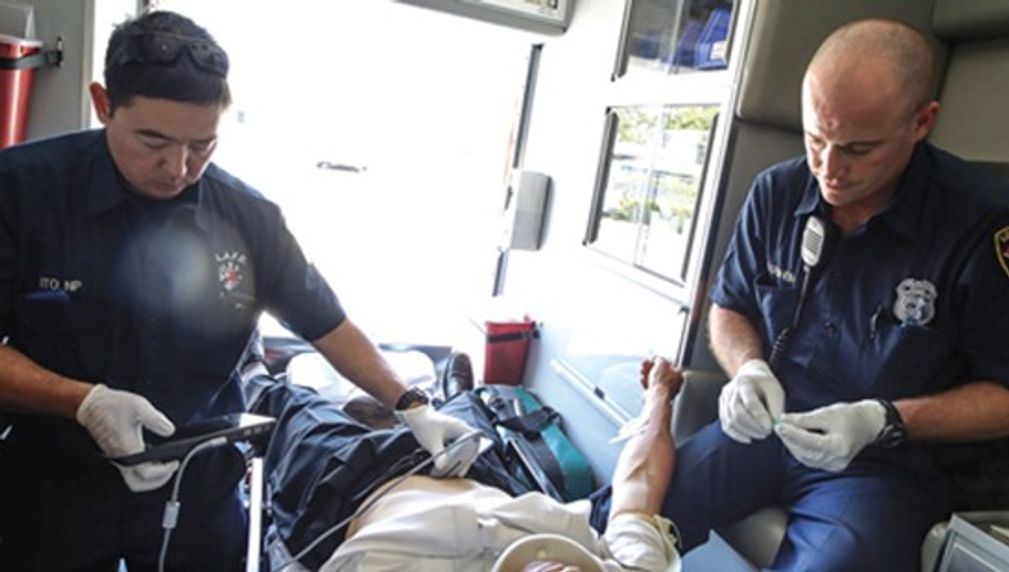LAFD Advanced Provider Response Unit (APRU)
The Los Angeles Fire Department (LAFD) is one of the largest fire departments in the nation, serving over four million people within a 471 square-mile jurisdiction. Despite its size, the department faces significant needs, particularly in managing the high volume of emergency medical calls—over 500,000 annually. To address this, the LAFD has implemented the innovative program of Advanced Provider Response Units (APRUs) to provide on-site treatment for low-acuity emergencies, reducing the strain on emergency rooms and improving patient care.

What is the primary issue area that your application will impact?
Health care access
In what stage of innovation is this project, program, or initiative?
Pilot or new project, program, or initiative (testing or implementing a new idea)
What is your understanding of the issue that you are seeking to address?
The LAFD serves as the largest provider of acute, unscheduled medical care, responding to more than 500,000 calls annually in Los Angeles. This translates to an average of 1,500 emergency medical calls daily, of which over 600 patients require transport to the hospital. Patients arriving at the hospital with low acuity medical problems tend to receive additional testing in the emergency department, use more hospital resources, and increase overall emergency room length-of-stay. This also increases in the wait time that ambulances must remain at the hospital. There were over 50,000 EMS incidents including People Experiencing Homelessness (PEH) patients. These individuals place an extraordinary demand on LAFD’s Emergency Medical System (EMS) and tax the already-busy field resources. Repeatedly transporting many of these patients to an emergency department does not address their chronic medical, substance abuse, and/or mental health issues.
Describe the project, program, or initiative this grant will support to address the issue.
Five years ago, the LAFD’s EMS Bureau embarked on an initiative to explore alternative solutions for more effective on-site patient care, reducing the need for hospital transports. In 2019, this innovative effort culminated in the launch of four Advanced Provider Response Units (APRUs) across Los Angeles. These units, each pairing a paramedic with a nurse practitioner, were designed to administer specific types of on-site emergency care. The pressing need to find an out-of-the-box approach to managing increasing emergency calls spurred the development of this unique program. The LAFD would like to use additional APRUs to directly address the city's most pervasive problems including responding to the opioid crisis, mental health issues, and mass casualty incidents. The APRUs strive to relieve the burden on emergency rooms, decrease wait times for patients and LAFD personnel at hospitals, and ultimately reduce medical costs. The APRUs have proven highly effective in delivering on-site treatment and have also proven to help relieve pressure from the LAFD's existing resources. This is especially important considering the recent budget cuts experienced by the LAFD. These vehicles can quickly assess, treat, and stabilize patients, which leaves the fire trucks and rescue ambulances available to answer other calls within the geographic area.
Describe how Los Angeles County will be different if your work is successful.
If the APRU program enhancements are successful, Los Angeles will see substantial improvements in emergency medical services and public health. The APRUs will reduce ER congestion by treating low-acuity patients on-site, improving patient outcomes and saving healthcare costs. Resource allocation will be optimized, leading to faster response times and less strain on EMS personnel.
People experiencing homelessness will benefit from immediate on-site care and connections to specialized services for mental health and substance abuse, addressing their chronic issues more effectively. The program will enhance public safety, foster community trust, and position Los Angeles as a leader in innovative healthcare solutions. This model could inspire similar programs nationwide, driving widespread improvements in emergency medical care.
What evidence do you have that this project, program, or initiative is or will be successful, and how will you define and measure success?
Metrics for Measuring Impact:
- Emergency Room Congestion - Reduction in the number of low-acuity patients transported to emergency rooms.
- Response Times - Average response time for emergency units.
- Patient Outcomes - Health outcomes for patients treated by APRUs
- Cost Savings - Reduction in healthcare costs related to emergency services.
- Impact on People Experiencing Homelessness - Number of individuals experiencing homelessness receiving on-site care and referrals.
Approximately how many people will be impacted by this project, program, or initiative?
Direct Impact: 550,000.0
Indirect Impact: 4,000,000.0